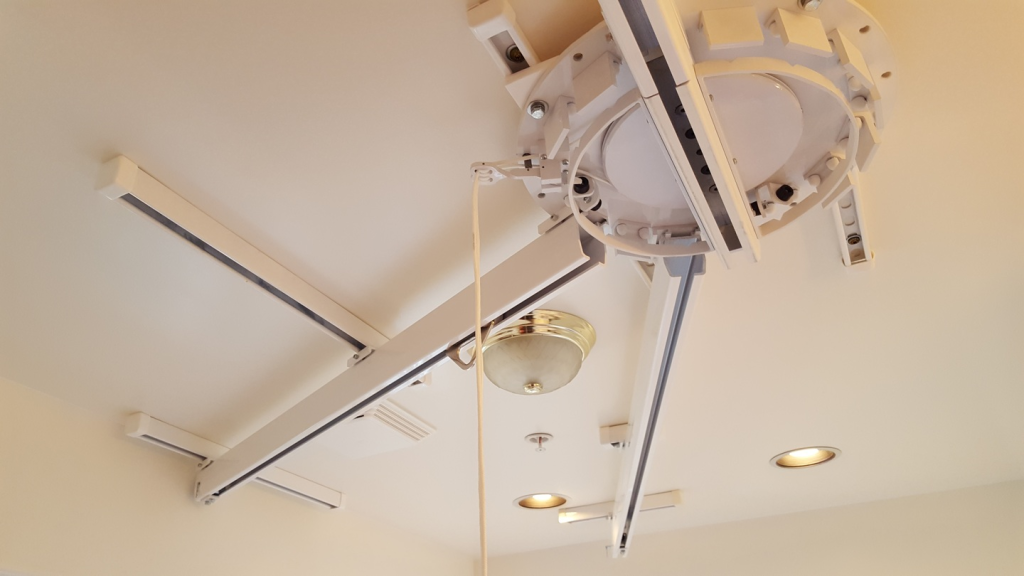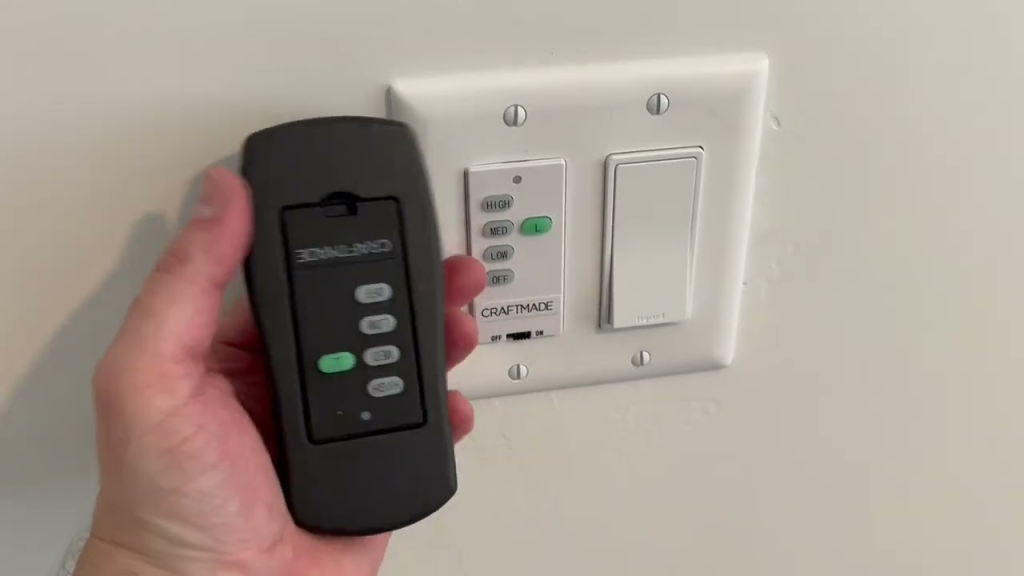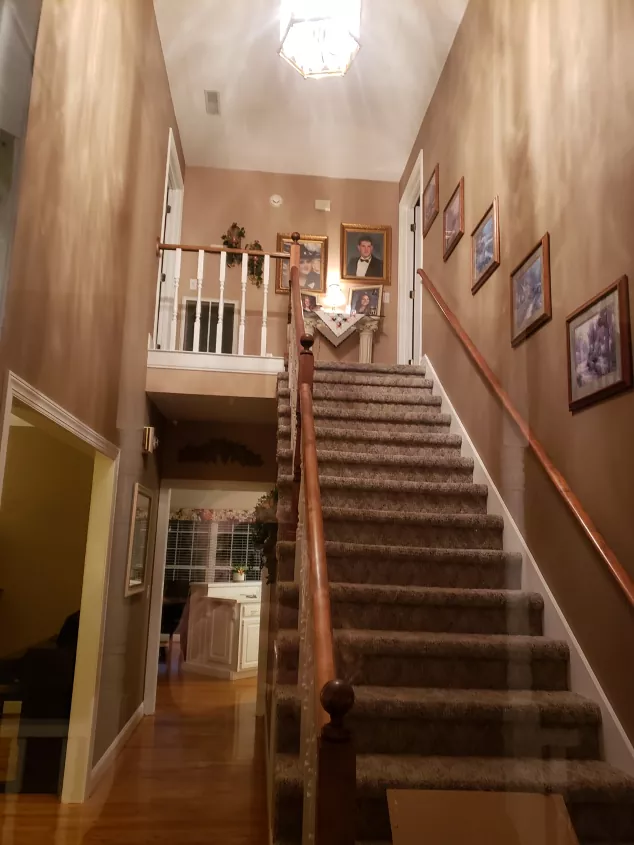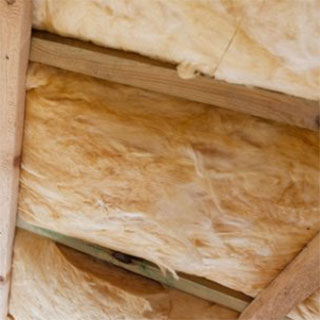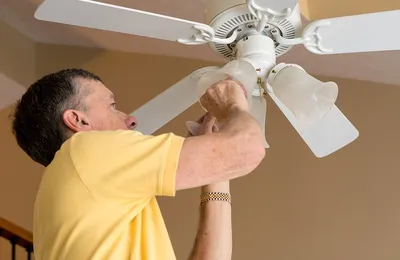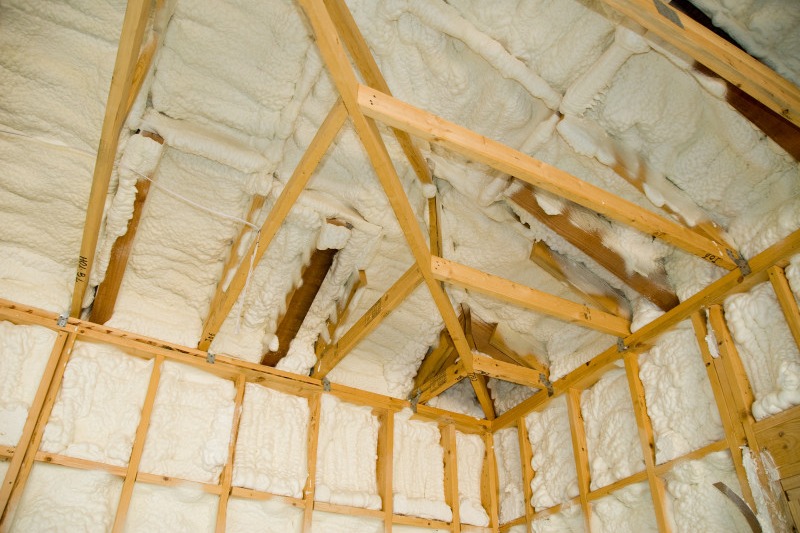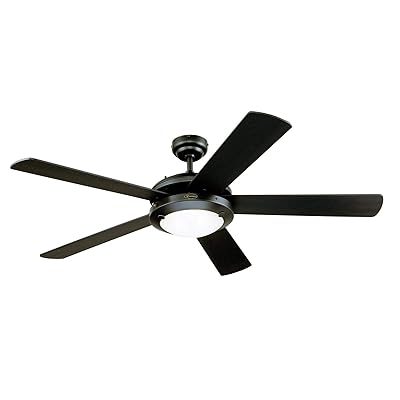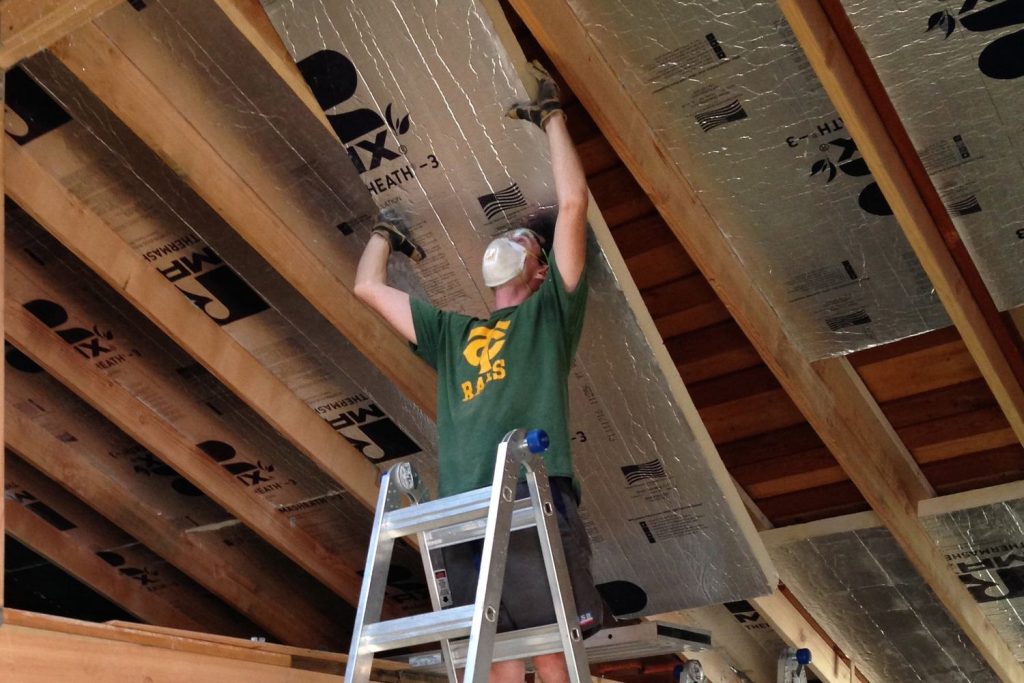When it comes to combining modern design with classic elegance, few ceiling fans can compete with the Kichler Hatteras Bay Ceiling Fans. Known for its exceptional craftsmanship and attention to detail, this fan not only enhances the aesthetic appeal of any room but also offers excellent functionality. Whether you’re looking to improve air circulation in your home or add a stylish accent to your living space, the Kichler Hatteras Bay Ceiling Fans is a great option to consider.

In this article, we’ll dive into everything you need to know about the Kichler Hatteras Bay Ceiling Fan—from its design and features to how it compares to other ceiling fans on the market. You’ll also learn about installation tips, maintenance, and why this fan is an excellent addition to both indoor and outdoor spaces.
Read too: Bathroom Flooded Through the Ceiling: A Comprehensive Guide
Why Choose the Kichler Hatteras Bay Ceiling Fan?
Choosing the right ceiling fan for your space goes beyond simply picking a fan that looks good. Performance, durability, and energy efficiency are all key factors to consider. Here’s why the Kichler Hatteras Bay Ceiling Fan stands out:
1. Timeless Design
One of the primary reasons homeowners love the Kichler Hatteras Bay Ceiling Fan is its timeless nautical-inspired design. This fan draws inspiration from coastal and industrial styles, making it a perfect fit for a variety of settings, including beach houses, cabins, or even modern lofts.
The fan comes in multiple finishes, including weathered copper, polished nickel, and oiled bronze, allowing you to match it with the decor of any room. Its sleek, classic design makes it a standout feature in any room, whether installed indoors or on a covered outdoor patio.
2. Impressive Airflow
Design isn’t everything when it comes to ceiling fans—performance is just as important. The Kichler Hatteras Bay Ceiling Fan is designed to deliver powerful airflow, ensuring that your space stays cool and comfortable even during the hottest months. With its 52-inch blade span and high CFM (Cubic Feet per Minute) rating, this fan moves air efficiently across large areas, making it ideal for rooms up to 400 square feet.
3. Energy Efficiency
The Kichler Hatteras Bay Ceiling Fan is also energy efficient, which means you can enjoy its cooling effects without worrying about a significant increase in your energy bill. It’s compatible with LED light kits, which are more energy-efficient and longer-lasting than traditional bulbs. In the long run, this helps reduce electricity costs while also being eco-friendly.
4. Indoor and Outdoor Versatility
One of the standout features of the Kichler Hatteras Bay Ceiling Fan is its versatility. This fan is rated for both indoor and outdoor use, meaning you can install it in living rooms, bedrooms, covered patios, and even kitchens. Its weather-resistant construction ensures that it can withstand the elements when used outdoors.
5. Quiet Operation
Nobody wants a noisy ceiling fan, and that’s another area where the Kichler Hatteras Bay Ceiling Fan excels. Thanks to its high-quality motor, the fan operates quietly, providing a gentle breeze without disturbing the peace of your space. This makes it ideal for bedrooms or living areas where noise levels are a concern.
Key Features of the Kichler Hatteras Bay Ceiling Fan
Let’s take a closer look at some of the key features that make the Kichler Hatteras Bay Ceiling Fan a popular choice among homeowners:
1. Durable Construction
The Kichler Hatteras Bay Ceiling Fan is built to last. With a sturdy metal frame and weather-resistant materials, this fan is durable enough to handle both indoor and outdoor environments. The blades are crafted from high-quality materials that are resistant to warping, ensuring smooth and reliable operation year after year.
2. Reversible Motor
This fan features a reversible motor, which means it can be adjusted to operate in both directions. During the summer, you can set the fan to rotate counterclockwise, creating a cooling breeze that pushes air downwards. In the winter, switch the direction to clockwise to circulate warm air from the ceiling, helping to maintain a comfortable temperature throughout the year.
3. Light Kit Compatibility
If you want to add lighting to your room, the Kichler Hatteras Bay Ceiling Fan offers compatibility with light kits. Whether you choose to install an integrated LED light kit or a more traditional setup, you can customize your fan to fit the lighting needs of your space.
4. Multiple Control Options
Controlling the Kichler Hatteras Bay Ceiling Fan is a breeze, thanks to the variety of control options available. Many models come with wall controls, and some even feature remote control options. These features make it easy to adjust the fan speed and lighting without leaving your seat.
5. Energy Star Rated
Energy efficiency is becoming more important than ever, and the Kichler Hatteras Bay Ceiling Fan is designed with this in mind. Many models are Energy Star rated, meaning they meet strict guidelines for energy efficiency set by the U.S. Environmental Protection Agency. This not only reduces your energy consumption but also helps protect the environment.
How to Install the Kichler Hatteras Bay Ceiling Fan
Installing a ceiling fan can seem daunting, but with the right tools and instructions, it’s a project that many homeowners can tackle on their own. Here are the basic steps for installing the Kichler Hatteras Bay Ceiling Fan:
1. Prepare Your Space
Before installation, ensure that you have a stable, properly sized junction box in the ceiling that is rated to hold the weight of the ceiling fan. Turn off the power to the circuit you’ll be working on for safety.
2. Assemble the Fan
The Kichler Hatteras Bay Ceiling Fan comes with all the parts you need, including the motor, blades, and mounting hardware. Begin by assembling the fan according to the manufacturer’s instructions. Be sure to secure all screws tightly to prevent any wobbling during operation.
3. Mount the Fan
Next, mount the fan’s bracket to the ceiling using screws and bolts. Once the bracket is securely in place, attach the fan’s motor and housing. Double-check that everything is level and firmly attached to prevent future issues.
4. Wire the Fan
Follow the manufacturer’s instructions for wiring the fan. Typically, you’ll need to connect the black (or blue) wire to the fan’s power source, the white wire to neutral, and the green or copper wire to ground. If your fan has a light kit, make sure to connect the additional wiring for the lights.
5. Attach the Blades
Once the fan is mounted and wired, attach the blades to the motor. Ensure that the screws are tightened securely to prevent any wobbling or rattling when the fan is in use.
6. Test the Fan
After installation, turn the power back on and test the fan. Check for smooth operation and ensure that the fan is balanced and not wobbling. If you encounter any issues, consult the user manual for troubleshooting tips or contact a professional for assistance.
Maintaining Your Kichler Hatteras Bay Ceiling Fan
Like any appliance, your Kichler Hatteras Bay Ceiling Fan will require occasional maintenance to ensure it continues to function properly. Here are some maintenance tips to keep your fan in top shape:
1. Regular Cleaning
Dust and dirt can accumulate on the fan blades, reducing performance and causing the motor to work harder than necessary. Clean the blades and housing regularly using a soft cloth or duster to prevent buildup. For outdoor installations, you may need to clean the fan more frequently due to exposure to the elements.
2. Lubrication
If your fan begins to make unusual noises or operates less smoothly than usual, it may require lubrication. Check the manufacturer’s guidelines for information on which parts of the fan need lubrication and how often it should be applied.
3. Tighten Screws and Bolts
Over time, the screws and bolts that hold your fan together may loosen, leading to wobbling or noise. Periodically check and tighten all screws and bolts to keep the fan operating smoothly.
4. Check the Balance
If your fan wobbles during operation, it may be unbalanced. To fix this, you can purchase a fan-balancing kit or adjust the placement of the blades to ensure they are evenly spaced and aligned.
Kichler Hatteras Bay Ceiling Fan: The Perfect Choice for Your Home
Whether you’re looking for a ceiling fan that adds style to your indoor space or one that can withstand outdoor conditions, the Kichler Hatteras Bay Ceiling Fan offers the perfect blend of form and function. With its elegant design, powerful performance, and durable construction, this fan is a reliable choice for any home. Its versatility makes it suitable for various spaces, from large living rooms to cozy covered patios.
With easy installation and low-maintenance requirements, the Kichler Hatteras Bay Ceiling Fan is a long-lasting investment that will keep your home comfortable year-round. Plus, its energy efficiency helps save on electricity costs, making it an eco-friendly choice.
Conclusion
When it comes to choosing a ceiling fan that combines style, durability, and performance, the Kichler Hatteras Bay Ceiling Fans is an excellent option. Its timeless design and high-quality features make it stand out among other ceiling fans on the market. Whether you’re installing it indoors or outdoors, this fan is sure to enhance the comfort and aesthetics of your space.

